How to Identify Insect & Pest Droppings: A Comprehensive Guide
By : Rita Stadler
Identifying pest droppings holds significant importance in pest control and maintaining a healthy living environment. Droppings can help homeowners determine the type of infestation they are dealing with in their space and can also give clues as to the severity of the infestation. It’s important to figure this out early so you can implement targeted control strategies and prevent further damage to your property.
Additionally, identifying the excrement will also help in understanding the associated health risks, as different pests may carry diseases or allergens. The earlier you figure out which insect or critter you’re dealing with, the earlier you can intervene and help reduce possible risks to you and your family’s health. Whether this means finding the right repellent to use or hiring the right professional pest control service, you must act quickly to keep your home into a pest-free zone.
This guide will cover the most common pests that affect North America homes and what their droppings look like.
Pest Droppings Identification Process
When starting the identification process, there are a few tips to keep in mind.
Physical Characteristics to Observe
When identifying pest droppings, it’s essential to pay attention to several key factors:
- Size: The size of the droppings can provide valuable insights into the type of pest responsible. Larger droppings may indicate rodents or wildlife, while smaller droppings could point to insects.
- Shape: Different pests leave distinct shapes of droppings. Rodent droppings tend to be cylindrical with tapered ends, while insect droppings may vary in shape depending on the species.
- Color: The color of droppings can vary greatly. Rodent’s are typically dark brown or black, while insect droppings may range from black to brown or even reddish hues.
- Texture: Examining the texture can help distinguish between dry or moist droppings. This information can be valuable for the timeline of when they occurred. Fresh droppings are moist and dark, while older ones may be dry and crumbly.
- Smell: The odor emitted can be a strong indicator of the pest type. Rodents often leave a pungent, musky odor (which is actually from the urine), while insect waste may have a more distinct or unpleasant smell.
By carefully observing and considering these characteristics, homeowners can gather valuable clues about the type of pest infestation they may be dealing with.
Tools and Techniques for Examination
During the identification process, there are several tools that can be useful.
- Magnifying glass: A magnifying glass is a valuable tool because it helps in observing the texture, shape, color, and size of the droppings. You can identify finer characteristics that might not be visible to the naked eye. This level of scrutiny can be crucial in distinguishing between similar-looking droppings from different pests.
- Gloves: Wearing gloves while handling pest droppings is essential for personal safety and hygiene. Pest droppings may carry harmful bacteria, parasites, or diseases that can pose health risks to humans. By using gloves, you protect yourself from direct contact with these potentially dangerous pathogens. Additionally, gloves prevent cross-contamination between droppings and other surfaces, minimizing the spread of germs and bacteria. It is crucial to dispose of gloves properly after use to avoid any potential contamination.
- Comparing droppings to online resources and reference materials: Many reputable websites, field guides, and pest control resources provide information and images of common pest droppings. By comparing what you have found to these resources, you can narrow down the potential pest or insect species responsible.
This website has a great chart that includes many of the pest droppings we will be covering.
Common Types of Pests and Their Droppings
From rodents to insects to wildlife, here are some of the common pest types that may infest a home, what their droppings look like, where you may find them, and general cleaning tips (however, we recommend researching the specific cleaning process for a pest following identification).
Rodents
House Mouse
Appearance: House mouse droppings are small and typically measure about 1/8 to 1/4 inch in length. They have a cylindrical shape with tapered ends. The color of fresh droppings is usually dark brown or black and they resemble grains of rice.
Common Places: Mouse poop can be found in areas where mice frequent including kitchen cabinets, pantries, storage areas, along baseboards, and near nesting sites.
Cleanup: To clean up house mouse droppings, wear disposable gloves and use a paper towel to pick up the droppings. Dispose of them in a sealed plastic bag and sanitize the area with a disinfectant cleaner.
Field Mouse
Appearance: Field mouse droppings are identical to house mouse droppings. They are small, ranging from 1/8 to 1/4 inch in length. They have a cylindrical shape with tapered ends, but their color can vary from dark brown to black.
Common Places: These can be found in similar locations as house mouse droppings, including garages, places where animal feed is stored, and on paths traveled by rodents along walls or baseboards.
Cleanup: Follow the same cleanup procedure as for the house mouse type.
Roof Rat
Appearance: Roof rat droppings are larger than mouse droppings, measuring around 1/2 to 3/4 inch in length. They have a spindle-like shape with pointed ends. The color of fresh droppings is typically dark brown or black.
Common Places: These are often found in attics, crawl spaces, along rafters, and in trees near buildings.
Cleanup: To clean, use gloves, a paper towel, or a plastic bag to pick up. Dispose of the droppings in a sealed plastic bag and sanitize the area thoroughly.
Norway Rat
Appearance: This type of excrement is larger than each of the other rodent types, measuring around 3/4 to 1 inch in length. They have a blunt-ended, sausage-like shape. The color of fresh droppings is typically dark brown.
Common Places: Norway rat droppings can be found in basements, attics, crawl spaces, along walls, and near food storage areas.
Cleanup: Use gloves and a paper towel or plastic bag to pick up the waste. Dispose of them in a sealed plastic bag and thoroughly sanitize the area.
Insects
Ants
Appearance: Ant droppings are tiny and often go unnoticed. They are usually very small and can vary in color depending on the ant species. Commonly, they resemble fine grains of sand or black specks.
Common Places: This type can be found near ant trails, entry points, or areas where they nest. They are commonly seen around food sources or in cracks and crevices.
Cleanup: Ant droppings are generally not a major concern for cleanup. Focus on eliminating the ant infestation by locating and addressing the source. Regular cleaning practices, such as vacuuming or wiping down surfaces, can help remove any visible droppings.
Bedbugs
Appearance: Bedbug droppings are small and appear as tiny dark spots or smears on surfaces such as bedding, mattresses, or furniture. They resemble small ink stains or rust-colored dots.
Common Places: These are commonly found near their hiding places, including mattresses, box springs, bed frames, or upholstered furniture.
Cleanup: When dealing with bedbug droppings, it is important to focus on eliminating the bedbug infestation. Consult a professional pest control service for proper treatment. Vacuum any visible droppings and discard the vacuum bag in a sealed plastic bag.
Cockroach
Appearance: Cockroach droppings are small and dark, typically resembling coarse coffee grounds or black specks. The size and shape can vary depending on the cockroach species.
Common Places: These are commonly found near their nesting areas, such as kitchens, bathrooms, cabinets, and areas where food is stored.
Appearance: Wear gloves and use a paper towel or plastic bag to pick up cockroach droppings. Dispose of them in a sealed plastic bag and sanitize the area thoroughly. It is crucial to address the underlying cockroach infestation through effective pest control methods.
Flies
Appearance: Fly droppings are small and dark in color, resembling tiny black or brown spots. They are often found near breeding sites or areas where flies gather.
Common Places: This type can be found near garbage bins, food preparation areas, outdoor spaces, and windows where flies frequent.
Cleanup: Wipe away any visible fly droppings using disposable gloves, paper towels, or cleaning wipes. Proper sanitation practices and eliminating fly breeding sites are essential for controlling fly populations.
Moths
Appearance: Moth droppings are small and usually appear as tiny specks or pellets. The color can vary depending on the moth species and the materials they feed on.
Common Places: Moth droppings are commonly found near infested clothing, stored food items, or in areas where moths lay eggs, such as corners of closets or pantries.
Cleanup: Remove by vacuuming or gently brushing them away. Launder or dry-clean infested clothing and discard infested food items. Proper storage practices and maintaining cleanliness can help prevent moth infestations.
Spider
Appearance: Spider droppings are typically small and dark-colored. They often appear as tiny specks or stains on surfaces where spiders are active, such as walls, corners, or webs.
Common Places: These can be found near their webs or in areas where they hide or construct their nests, such as ceilings, windows, or undisturbed spaces.
Cleanup: This type can be easily wiped away using a cloth or paper towel. Regular cleaning practices and eliminating spider webs and hiding places can help manage spider populations.
Termites
Appearance: Termite droppings, also known as frass, resemble tiny wood-colored or dark brown pellets. They often accumulate in small piles or mounds and can be mistaken for sawdust or dirt.
Common Places: This type is commonly found near areas of termite activity, such as damaged wood, termite galleries, or in basements, crawl spaces, or attics where termites infest.
Cleanup: Termite droppings are an indication of termite infestation and it is crucial to consult a professional pest control service for proper inspection and treatment.
Wildlife
Bat
Appearance: Bat droppings, also known as guano, vary in appearance depending on the diet of the bat species. They can range from small, elongated pellets to larger accumulations resembling clusters or mounds. Fresh bat droppings have a moist and shiny appearance, but they dry and become crumbly over time.
Common Places: Bat droppings are typically found in areas where bats roost or nest, such as attics, caves, eaves, or wall voids.
Cleanup: Due to the potential health risks associated with this type of waste, it is recommended to seek professional help for their removal and cleanup. Bat guano can contain harmful fungal spores, so proper safety precautions and specialized equipment are required.
Opossum:
Appearance: Opossum droppings are typically small, cylindrical, and segmented. They resemble elongated pellets with rounded ends. The color can vary depending on the diet but is often dark brown or black.
Common Places: These are typically found in areas where opossums frequent, such as crawl spaces, attics, or outdoor spaces near their nests or feeding areas.
Cleanup: Opossum droppings can be cleaned up using gloves and a paper towel or plastic bag. Dispose of the droppings in a sealed plastic bag and sanitize the area thoroughly. Taking measures to prevent opossum access to the property, such as sealing entry points, can help prevent further droppings.
Snake
Appearance: Snake droppings, also known as snake scat, vary depending on the species and diet. They can be tubular or elongated in shape, similar to mammal droppings, but with a smooth and shiny appearance. The color may vary based on the snake’s diet.
Common Places: These are often found in areas where snakes reside or travel, such as outdoor habitats, gardens, or crawl spaces.
Cleanup: If you come across any, it is advisable to exercise caution and avoid direct contact. While snake droppings are generally not a significant concern for cleanup, you can use gloves and a disposable tool to remove them. Sanitize the area and consider taking measures to prevent snake entry into buildings or homes.
Skunk
Appearance: Skunk droppings are usually large and tubular, resembling those of a small dog. They have a twisted or segmented appearance and can vary in color, from dark brown to black.
Common Places: It’s common to find this in their dens or along their travel paths, such as under decks, in gardens, or near garbage areas.
Cleanup: Skunk droppings may carry odor and potentially transmit diseases, so it is advisable to take caution when handling them. Wear gloves and use a disposable tool to pick up the droppings. Dispose of them in a sealed plastic bag and sanitize the area thoroughly. If the area has been sprayed by a skunk, specialized cleaning methods may be necessary to eliminate the odor.
Squirrel
Appearance: Squirrel droppings are small and cylindrical, resembling tiny pellets. They have rounded ends and can vary in color, depending on the squirrel’s diet, but are generally dark brown or black.
Common Places: This type can be found in areas where squirrels nest or travel, such as attics, crawl spaces, or outdoor areas near trees or feeding sites.
Cleanup: Use gloves and a paper towel or plastic bag to pick up squirrel droppings. Dispose of them in a sealed plastic bag and sanitize the area thoroughly. It is important to address any squirrel infestation and seal potential entry points to prevent these pests.
Other Signs of Pests
Droppings are often accompanied by other signs of pest activity. Look for tracks, gnaw marks, damaged food or property, nests, or unusual sounds or smells associated with pests. These can provide further confirmation of an infestation. Assess the quantity and freshness of the droppings. A larger quantity of droppings often indicates a more significant infestation.
Steps to Take After Identification
After cleaning up pest droppings, it is important to sanitize the area properly to minimize any potential health risks.
Identify and seal entry points: Begin by conducting a thorough inspection of your home to locate potential entry points for pests. Check for gaps or cracks in the foundation, walls, windows, doors, utility lines, and vents. Use a combination of caulk, weatherstripping, and expanding foam to seal these openings. For small gaps and cracks, apply caulk to fill the spaces. Weatherstripping can be used to seal gaps around doors and windows, while expanding foam can effectively fill larger openings. Pay extra attention to areas where utility lines enter your home, as pests can exploit even the smallest gaps around these entry points.
Reinforce vulnerable areas: Some areas of your home may be more susceptible to pest entry than others. Take extra precautions to reinforce these vulnerable areas. For example, install door sweeps on exterior doors to create a tight seal at the bottom and prevent pests from squeezing through gaps. Use mesh screens on windows, vents, and chimney openings to prevent insects and rodents from gaining access. Seal gaps around pipes, cables, and electrical wires using steel wool or metal mesh, as pests can easily chew through materials like plastic or rubber. By reinforcing these weak points, you create an additional layer of defense against pest intrusion.
Use an effective repellent. EarthKind’s botanical pest repellents use essential oils and other plant-based ingredients to release scents that effectively deter specific types of pests. This is an important step to take to prevent pests from infesting your home in the future.
Pest Prevention Moving Forward
The identification of pest droppings plays a crucial role in maintaining a pest-free environment. Early detection allows for targeted pest control measures and proactive prevention strategies. Regular inspection of the property for droppings is a fundamental practice in effective pest management. By staying vigilant and taking swift action when signs of pests are identified, you can ensure a healthier, safer, and more comfortable living or working space for everyone involved.
Using a repellent that keeps pests out of the home in the first place is a key prevention tactic. Check out Stay Away or Fresh Cab botanical repellents and deterrents online or find them in a store near you.





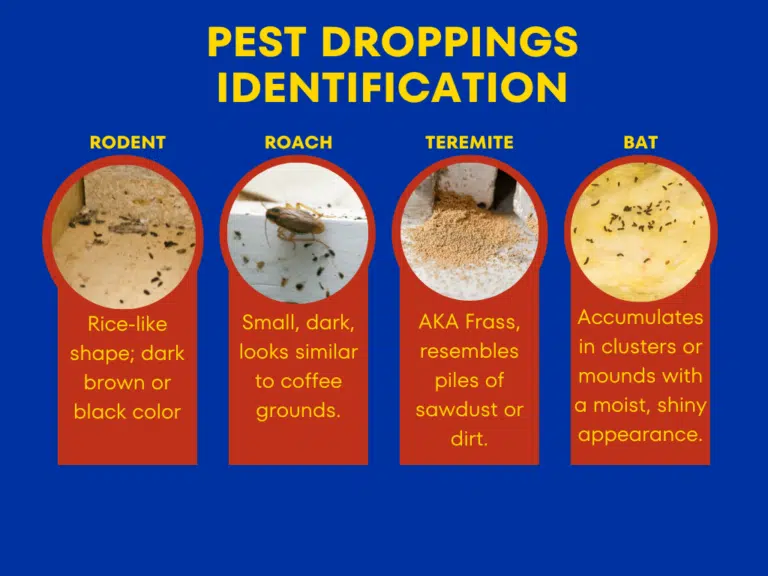
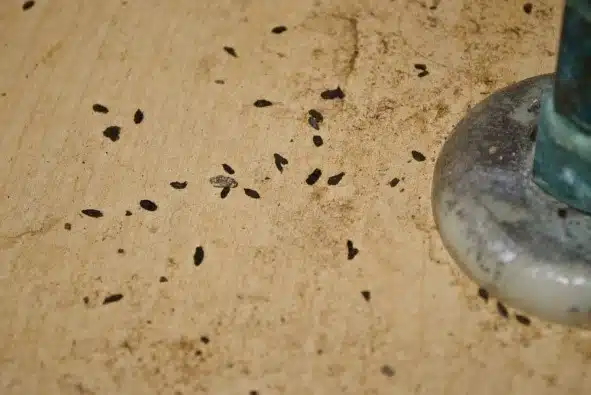
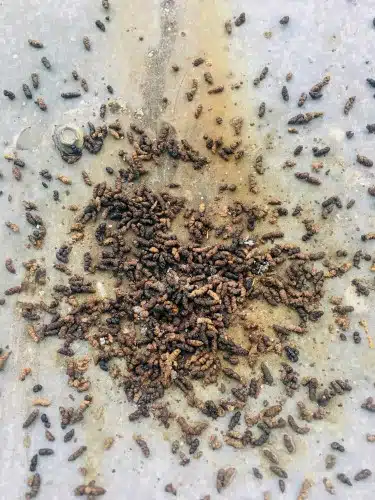
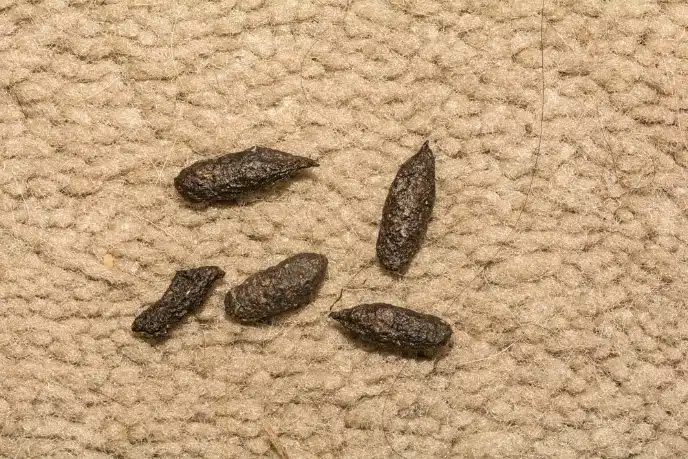
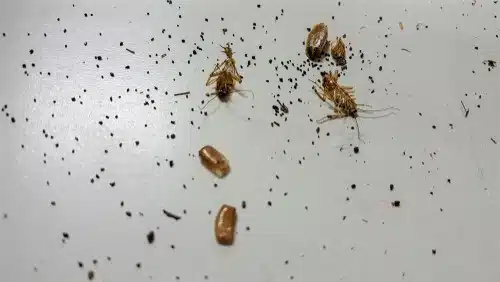

 day
day